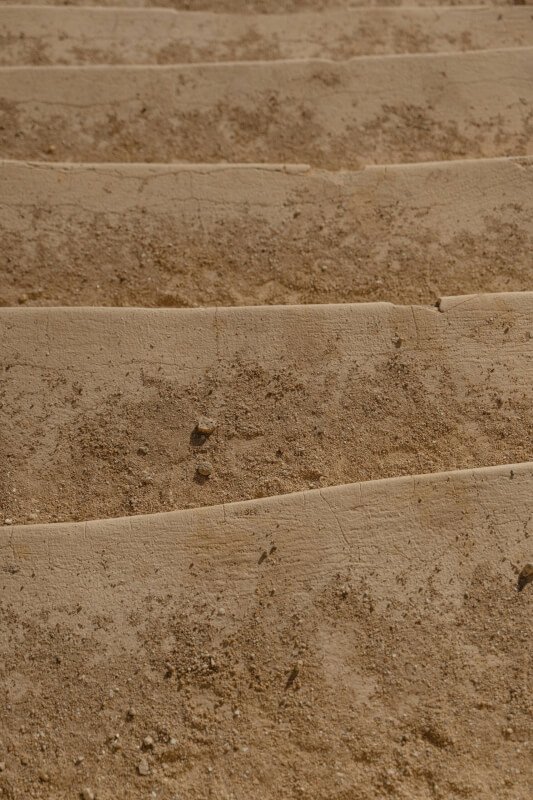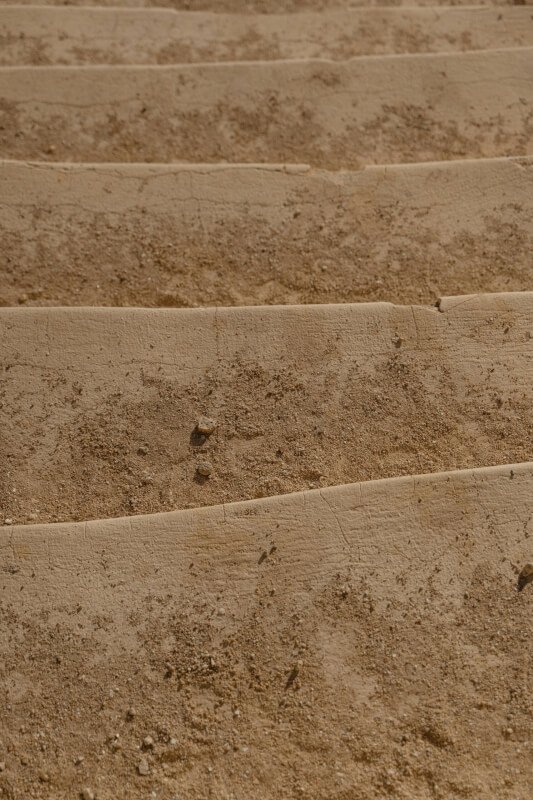In this article, you will learn essential tips on how to create a safe environment for your pet snakes during extreme weather conditions. As responsible pet owners, it is crucial to ensure our scaly friends are comfortable and protected from the impacts of extreme temperatures. From adjusting their enclosure’s temperature and humidity levels to providing ample shelter, this guide will equip you with the necessary knowledge to safeguard your pet snakes and keep them healthy and happy regardless of the weather outside.
Habitat Considerations
Keeping your pet snake safe and comfortable in its habitat is crucial, especially during extreme weather conditions. Here are some important factors to consider when setting up and maintaining your snake’s habitat.
Temperature Control
Snakes are ectothermic, meaning they rely on external heat sources to regulate their body temperature. It is essential to provide a temperature gradient within the enclosure, allowing your snake to move between warm and cool areas as needed. Use a reptile-specific heating pad or heat lamp to create a warm spot of around 85-90°F, as well as a cooler side maintained at 75-80°F. Monitoring the temperature using a thermometer is crucial to ensure optimal conditions for your snake’s well-being.
Humidity Control
Humidity plays a crucial role in maintaining a healthy environment for your pet snake. Different snake species have varying humidity requirements, so it is important to research the specific needs of your snake. You can control humidity levels by using a hygrometer and adjusting the moisture content in the enclosure through misting, adding a water bowl, or using a humidifier. Providing a hiding spot with higher humidity can also help your snake shed its skin properly.
Lighting
While snakes do not require UVB lighting like some reptiles, providing a regular day-night cycle can help regulate their natural behavior. A light source with a timer that simulates a 12-hour day and 12-hour night cycle is recommended. Snakes are generally crepuscular or nocturnal, so it’s important to provide them with a dark hiding place where they can retreat during the day. Avoid placing the enclosure in direct sunlight, as it can lead to overheating or sudden temperature fluctuations.
Ventilation
Good air circulation is essential for your snake’s well-being. Ensure that the enclosure has adequate ventilation to prevent the buildup of harmful gases and excess humidity. Avoid using airtight or fully enclosed enclosures, as they can lead to respiratory issues for your snake. Provide ventilation through small vents or a mesh screen top, ensuring there is no risk of escape for your pet.
Safety Measures
Creating a safe environment for your pet snake is of utmost importance. Implementing proper safety measures will help prevent any mishaps and ensure your snake remains secure in its enclosure.
Escape-Proof Enclosure
Snakes are excellent escape artists, so it is crucial to have a secure enclosure. Use enclosures that have tight-fitting lids or sliding doors to prevent any possibility of your snake escaping. Regularly check for any gaps or loose fittings that could potentially be exploited by your snake. Remember, a lost snake in your home can be dangerous both for the snake and for you.
Secure Locking Mechanism
Even with a secure enclosure, it is recommended to have a secondary locking mechanism in place. This can be in the form of clips, latches, or padlocks, depending on the type of enclosure you have. Having that extra layer of security will give you peace of mind, knowing that your snake is safe inside.
Proper Ventilation
While ventilation was already discussed under habitat considerations, it deserves emphasis in terms of safety as well. Proper air circulation prevents the accumulation of stagnant air, which can lead to respiratory problems for your snake. Ensure that the enclosure has enough ventilation to keep the air fresh and healthy for your pet.
Avoidance of Extreme Temperatures
Extreme temperatures can be detrimental to your snake’s health. Avoid exposing the enclosure to direct sunlight or placing it near sources of heat, such as radiators or air conditioners. Drastic temperature changes can be stressful for your snake and may even be fatal. Keep the enclosure in a room with a stable temperature and away from drafts or cold spots.

Managing Cold Weather
Cold weather poses specific challenges for snake owners, as heating becomes crucial to maintain the appropriate temperature gradients within the enclosure.
Add Heating Elements
In colder weather, it may be necessary to augment the heat source within the enclosure. This can be done by using additional heating pads, ceramic heat emitters, or radiant heat panels. Place the supplemental heating elements on the cooler side of the enclosure, ensuring they do not come in direct contact with your snake to prevent burns.
Use Heat Reflective Surfaces
To maximize the efficiency of heating within the enclosure, consider using heat-reflective surfaces. Reflective materials, such as aluminum foil or specialized reptile heat mats, can help trap heat and direct it towards your snake. These surfaces can be placed under the substrate or along the sides of the enclosure to create a more thermally stable environment.
Insulate the Enclosure
During cold weather, insulation can be beneficial in preventing heat loss from the enclosure. You can achieve insulation by placing a layer of insulating material, such as polystyrene boards or reflective bubble wrap, around the outer walls of the enclosure. Ensure that the insulation does not impede ventilation and is secure, preventing your snake from accessing or damaging it.
Monitor Temperature Diligently
Regularly monitor the temperature inside the enclosure during colder months. Ensure that the warm side remains within the recommended range of 85-90°F and the cool side is maintained at 75-80°F. Adjust the heating elements accordingly to maintain these temperature gradients. Using a thermostat to regulate the heat source can provide an added layer of temperature control and safety.
Managing Hot Weather
Just like cold weather, high temperatures can also pose a risk to your pet snake’s health. Here are some measures you can take to ensure your snake remains comfortable during hot weather conditions.
Provide Cooling Options
Offering cooling options within the enclosure is essential to prevent overheating. You can include reptile-specific cooling rocks, chilled ceramic tiles, or cold water bowls placed in the cooler section of the enclosure. These options allow your snake to thermoregulate by finding a cool spot when needed.
Place Enclosure Away from Direct Sunlight
Direct sunlight can quickly raise the temperature inside the enclosure, leading to heat stress for your snake. Position the enclosure in a shaded area of your home, away from direct sunlight. If you cannot avoid sunlight exposure entirely, use curtains or blinds to filter the heat and provide some shade for your snake.
Use Reflective Materials
Reflective materials can be useful in hot weather to minimize heat absorption. Apply a reflective film on the outer walls or cover the enclosure with a reflective material to reduce heat transfer. Reflective materials can help maintain a cooler environment within the enclosure by reflecting the sun’s rays and reducing the overall temperature inside.
Ensure Proper Airflow
During hot weather, proper airflow is crucial to prevent stagnant air and allow for cooling. Position fans strategically near the enclosure to promote air circulation. Ensure that the air current does not directly blow on your snake, as this can cause stress or respiratory problems. The goal is to maintain a gentle breeze to help dissipate excess heat.

Food and Water Considerations
Proper nutrition and hydration are vital for the overall health and well-being of your pet snake. Consider the following factors when it comes to food and water for your snake.
Maintaining Regular Feeding Schedule
Snakes have different feeding schedules depending on their age, species, and activity level. Research the specific dietary requirements of your snake and establish a regular feeding schedule. Offer appropriately-sized prey items to ensure your snake receives the necessary nutrients. Stick to reputable sources for purchasing frozen prey items and ensure they are safely thawed before feeding.
Offering Fresh Water
Ensure your snake has access to clean and fresh water at all times. Use a shallow bowl that is large enough for your snake to soak in if desired. Check the water bowl daily to ensure it is clean and replenish the water as needed. A well-hydrated snake is less likely to suffer from dehydration and related health issues.
Avoiding Contamination
To prevent bacterial growth and contamination, it is essential to maintain hygiene around the food and water areas. Clean the water bowl regularly with mild soap and warm water, rinsing it thoroughly to remove any soap residue. Avoid using harsh cleaning chemicals, as they can be harmful to your snake. Similarly, handle prey items and feeding utensils with clean hands and use separate tools to avoid cross-contamination.
Preventing Dehydration
In extreme weather conditions, your snake may require additional hydration. Consider providing a humid hide or dampening part of the substrate to increase humidity levels and prevent dehydration. Consult with a reptile veterinarian if you notice signs of dehydration, such as sunken eyes, wrinkled skin, or decreased activity.
Health and Hygiene
Maintaining the health and hygiene of your snake is essential for its overall well-being. Follow these guidelines to ensure your snake remains healthy and free from common health issues.
Regular Veterinary Check-ups
Schedule regular veterinary check-ups for your snake to prevent and detect any underlying health problems. Experienced reptile veterinarians can perform routine examinations, check for signs of illness, and provide vaccination if necessary. Regular check-ups also allow for preventative care and education on proper snake husbandry.
Proper Substrate
Choosing the appropriate substrate in your snake’s enclosure is essential for its health and hygiene. Substrate options can vary depending on the snake species, but some common choices include reusable reptile carpet, aspen shavings, or coconut fiber. Ensure the substrate is kept clean, free from feces, and changed regularly to prevent bacterial growth and odor.
Cleaning and Disinfecting
Regular cleaning and disinfecting of your snake’s enclosure are crucial in preventing the spread of disease and maintaining a healthy environment. Remove any waste, uneaten food, or shed skin promptly using gloves or dedicated cleaning tools. Use reptile-safe disinfectants specifically formulated for reptile enclosures, and follow the instructions carefully to ensure effective disinfection without harming your snake.
Preventing Mites and Parasites
Mites and parasites can be common issues for pet snakes. Regularly inspect your snake for any signs of mites, such as small crawling insects or black spots on scales. If mites are present, consult with a reptile veterinarian for appropriate treatment. Practice proper quarantine procedures when introducing new snakes to your collection and regularly clean and disinfect any shared equipment to prevent the spread of parasites.

Behavioral Stimulation
Ensuring your snake has an enriched environment is essential for its mental and physical well-being. Consider these strategies to provide behavioral stimulation for your pet.
Providing Enrichment Activities
Offer a variety of objects and activities to keep your snake mentally stimulated. This can include providing climbing branches, tunnels, or toys suitable for snakes. Experiment with different types of objects to observe your snake’s preferences and adjust accordingly. Offering environmental enrichment can help alleviate boredom and promote natural behaviors.
Creating Hiding Spots
Snakes are natural burrowers and require places to hide and feel secure. Provide at least two hiding spots on each side of the enclosure—one on the warm side and one on the cool side. These hiding spots can be created using specially designed hides, half logs, or even inverted plant pots. Ensure that the hiding spots are appropriately sized, allowing your snake to comfortably curl up inside.
Offering Climbing Opportunities
Some snake species, such as arboreal snakes, naturally climb and benefit from vertical space. Consider incorporating branches or elevated platforms into the enclosure to allow your snake to climb and explore. Ensure that the branches are secure, offering stability and security for your snake to prevent any potential injuries or escapes.
Monitoring Signs of Stress
Observing your snake’s behavior is crucial in ensuring its well-being. Look out for signs of stress, such as loss of appetite, excessive hiding, unusual aggression, or constant pacing. If you notice any abnormal behaviors, consult with a reptile veterinarian to rule out any underlying health issues and make appropriate adjustments to the habitat or enrichment activities.
Emergency Preparedness
Being prepared for emergencies can make all the difference in ensuring the safety and well-being of your pet snake. Here are some essential steps to take in case of emergencies.
Creating a First Aid Kit
Prepare a first aid kit specifically for reptiles, including items such as reptile-safe wound cleanser, antiseptic ointment, sterile gauze pads, and bandages. Familiarize yourself with basic reptile first aid procedures, and keep emergency contact information for a reptile veterinarian readily available in case of unexpected illness or injury.
Knowing Emergency Contacts
Identify and keep a list of emergency contacts, including reptile veterinarians, local herpetological societies, and reptile rescue organizations. In case of emergencies, having these contacts readily available can help you access the necessary assistance and guidance quickly.
Understanding Common Snake Health Issues
Educate yourself on common snake health issues, such as respiratory infections, mites, or scale rot. Familiarize yourself with the signs and symptoms of these conditions, as well as the appropriate treatment options. Regularly educate yourself on potential diseases, as new information and treatments may become available over time.
Learning Basic Snake Handling Techniques
Handling your snake properly is crucial for both your safety and your snake’s well-being. Learn and practice proper snake handling techniques, ensuring that you support the snake’s body and avoid any sudden movements. If you are unsure about handling your snake or need help, seek guidance from an experienced reptile handler or consult with a reptile veterinarian.

Transportation Tips
Occasionally, you may need to transport your snake—for vet visits, relocation, or other reasons. Follow these tips to ensure a safe and stress-free journey for your snake.
Preparing a Secure Carrier
Use a secure and properly ventilated carrier for transporting your snake. Ensure the carrier has a secure locking mechanism and is escape-proof. Line the carrier with a suitable substrate to provide comfort and prevent the snake from slipping or getting injured during the journey.
Maintaining Optimal Temperature
Maintaining the appropriate temperature is crucial during transportation. Depending on the outside weather conditions, you may need to use heat or cooling packs inside the carrier to maintain the optimal temperature range for your snake. Use a thermometer inside the carrier to monitor the temperature and make adjustments as necessary during the journey.
Avoiding Travel During Extreme Weather
Avoid traveling with your snake during extreme weather conditions, such as intense heatwaves or freezing temperatures. If unavoidable, take extra precautions to ensure your snake’s safety and well-being during the journey. Plan your trip during the milder times of the day and take breaks to monitor and adjust temperature conditions inside the carrier.
Planning for Long-distance Trips
For long-distance trips, consider making regular stops to allow your snake to rest and adjust to the new environment. Ensure you have a suitable setup for your snake during these stops, including water availability and temperature regulation. Research and plan your trip in advance, identifying proper accommodation options if an overnight stay is necessary.
Conclusion
Creating a safe environment for your pet snake in extreme weather conditions requires attention to detail and proper planning. By considering habitat considerations, implementing safety measures, managing cold and hot weather conditions, providing appropriate food and water, maintaining health and hygiene, offering behavioral stimulation, being prepared for emergencies, and following transportation tips, you can ensure the well-being of your beloved snake. Remember, reptile care is an ongoing learning process, so continue to educate yourself and seek professional advice when needed. With proper care and consideration, you can provide a safe and comfortable home for your pet snake, regardless of the weather conditions.



